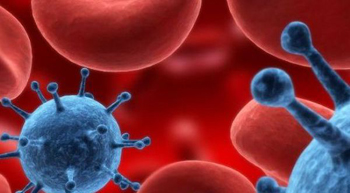New Delhi, Feb 4: World Cancer Day is being observed today (February 4) to raise cancer awareness and to encourage its prevention, detection and management.
 Cancer accounts for more deaths worldwide than AIDS, malaria, and tuberculosis combined.
Cancer accounts for more deaths worldwide than AIDS, malaria, and tuberculosis combined.
According to the World Economic Forum (WEF),"Cancer is among one of the three greatest risks to the global economy".
In India, cancer is one of the 10 leading causes of deaths in India and is an increasing public health challenge. With a prevalence of three million and annual incidence of one million, the statistics are alarming. It kills around five lakh people annually. In 2011, the UN resolution declared 4 key strategies to curb rising burden of cancers - tobacco control, controlling unsafe use of alcohol, obesity control and better nutrition.
Dr Vedant Kabra, Director of Surgical Oncology, Fortis Memorial Research Institute, Gurugram and a Voice of Tobacco Victims (VoTV) patron, says, "To have a clean and safe campus is every child's right. We must work on preventable strategies along with the treatments. It is a misery to see youngsters impacted by tobacco use and families getting destroyed mentally, financially and socially due to cancers."
Dr.Kabra further elaborates that "Hazards of tobacco are unlimited. There's no body part which is not affected by it. Smokeless tobacco contains nicotine, which is highly addictive. There are 3095 chemical components in tobacco, among them 28 are proven carcinogen. The major and most abundant group of carcinogens is the tobacco-specific N-nitrosamines (TSNA) and N-nitrosoamino acids."
"The nitrosamine level is directly related to the risk of cancer. Scientific evidence has established that tobacco chewing causes cancer of mouth, oesophagus (food pipe), larynx and pharynx (throat), pancreas, stomach, kidney and lung. It can also cause high blood pressure and other life threatening cardiovascular conditions like myocardial ischemia (heart attack), brain stroke etc. The use of smokeless tobacco during pregnancy can cause still birth, low birth weight, premature delivery, anaemia of mother and several complications during delivery," he adds.
As per the Global Adult Tobacco Survey (GATS) released by the MoHFW (2010), around 43 lakhs people above the age of 15 in Haryana (i.e. one in every four individual) are consuming tobacco in some or the other form. One-third of them will be diseased by the serious illnesses such as cancer, heart diseases, lung cancers among others and will die premature deaths.
Dr.Pankaj Chaturvedi, Professor Surgical Oncology, Tata Memorial Hospital, said, "It is a mammoth task to improve the nutritional status of a nation of one billion people. However, importantly control on tobacco / areca nut / alcohol / junk food is well within the reach of our policy makers."
While the cancer causing effects of tobacco are well known, most are still unaware of harmful effects of Alcohol, areca nut and obesity. The only way to discourage their usage is to strictly implement the Cigarette and Tobacco Product (COTPA) Act that aims to prohibit smoking in public places, prohibit sale to minors, stop direct and indirect advertising.
In India, every year in India, around one million new cancer cases are diagnosed and around 600,000 to 700,000 people die from cancer. In a report of April 2014, around two-fifths (40 percent) of all cancers in India are attributable to tobacco use and the economic costs of illness and premature death due to tobacco consumption exceed combined government and state expenditure and state expenditure on medical and public health, water supply and sanitation[i].
In India, 5500 children initiate tobacco use every day. Indeed, a very alarming statistic. A very effective strategy to prevent the 90 percent of oral cancers and 40 percent of all cancers is controlling the initiation of tobacco from childhood. Implementation of Section 4 & 6 of the Cigarettes and Other Tobacco Products Act (2003) would leave children with no access to tobacco products and have a clean and safe campus. If we make youngsters aware right from the childhood about the hazards of tobacco, the initiation rates would be very less thereby preventing these cancers.





Comments
Add new comment